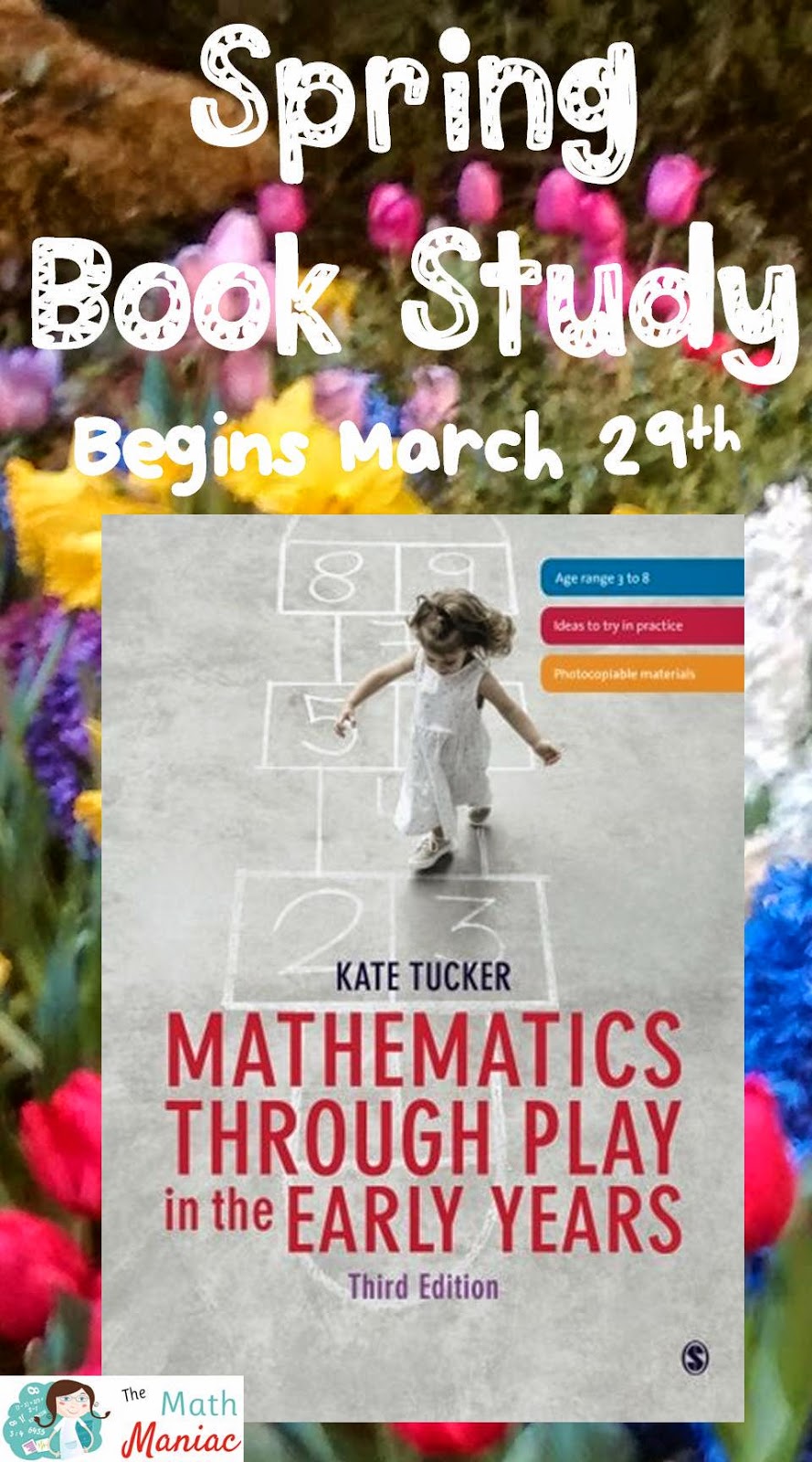Welcome to week 1 of our Math Through Play Book Study! I love seeing my students excited about learning math and engaged in doing mathematics. I love seeing how young children work on big math ideas through play and am so excited to be reading this book. After being just a few chapters into this book, I already have a few ideas for how I can incorporate more math into my own children's play as well as set things up at school to have more math play time.
Here is the posting schedule for this book study:
Sunday March 29th: Chapters 1-3
Sunday April 5th: Chapters 4&5
Sunday April 12th: Chapters 6&7
Sunday April 19th: Chapters 8&9
If you are just joining us, head to this post for more details!
Chapter 1: Play and Problem Solving
 Kids need to play. Some of my favorite activities in the classroom where I really feel like kids are engaged and learning math while solving problems have came from play based situations. It is truly amazing how much STEM work can come out of play. This chapter helped me think about how play connects with other areas of math learning to give kids a solid foundation. "This connection making between images, words and symbols at an early stage will often help children avoid misconceptions at a later stage." I love this idea about play laying a strong mathematical foundation. Misconceptions and fragmented knowledge are two of the biggest thorns in my side when I work with older children and if some of this can be avoided by providing more play opportunities when they are younger than I am all for it. This chapter helped me think about how I can ask more open ended questions, provide open ended resources, give kids more time to talk and embrace the opportunity when kids want to extend what they are working on. These ideas are obviously great for play based math but I think they will also help me when working with older students.
Kids need to play. Some of my favorite activities in the classroom where I really feel like kids are engaged and learning math while solving problems have came from play based situations. It is truly amazing how much STEM work can come out of play. This chapter helped me think about how play connects with other areas of math learning to give kids a solid foundation. "This connection making between images, words and symbols at an early stage will often help children avoid misconceptions at a later stage." I love this idea about play laying a strong mathematical foundation. Misconceptions and fragmented knowledge are two of the biggest thorns in my side when I work with older children and if some of this can be avoided by providing more play opportunities when they are younger than I am all for it. This chapter helped me think about how I can ask more open ended questions, provide open ended resources, give kids more time to talk and embrace the opportunity when kids want to extend what they are working on. These ideas are obviously great for play based math but I think they will also help me when working with older students. Chapter 2: Creating and Using a Mathematical Environment
More than anything this chapter makes me want to go out and create an outdoor classroom. This would be a huge undertaking but I think it would be amazing! I obviously can't do this all at once but it has really motivated me to look into some possibilities and think about how I can get kids outside more. I need to do more research!
As ambitious as creating an outdoor classroom sounds, there were many ideas from this chapter that I feel I could add easily and immediately. There are several things I could do in many grades to create a more mathematically rich environment. Many of these things I already have but I need to think about how to make some of them easily accessible to students.
- Books about numbers
- Construction kits: block, Legos, Lincoln logs, etc.
- Measuring and weighing tools
- Number tracks
- Tactile number cards (looking for ideas for these!)
- A display area to display student graphics
- Blank booklets for students to make their own math books or to record their own thinking
- Washing line (loved these ideas! Thinking about where this could fit!)
- Add some math components to the writing center: sheets of large numerals, sheets of math vocab, plastic shapes and rulers.
 Creative Recording and Mathematical Graphics
Creative Recording and Mathematical Graphics
I think this is an area where I need some improvement. I have come a long way from being the worksheet queen and spend a lot less time coping papers for kids. I have even had kids making their own record sheets for games and such the last few years. However, I think there is still much for me to learn about helping kids record or capture their math thinking in their own way. I love the idea of recording math being similar to mental math on paper. I have found having the talk with kids about math class drawing being different from art class drawing to be important. The suggestions in this chapter gave me some good ideas about how I can be more intentional in letting kids record their own ideas. I definitely need to get working on a way to display children's math graphics!
What were your thoughts on this week's reading? Do you know of any great resources on creating an outdoor classroom? What about ideas for tactile numbers or displays of children's math graphics! Can't wait to read your thoughts!















